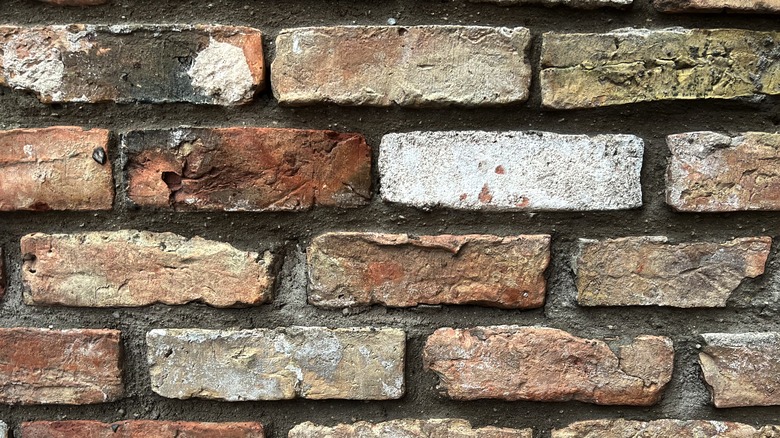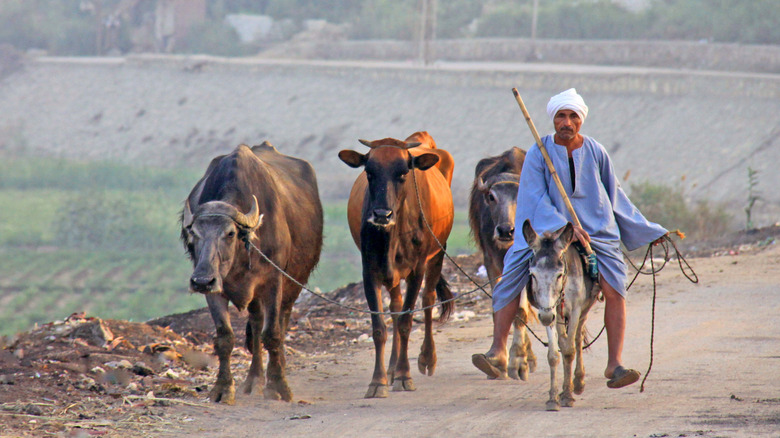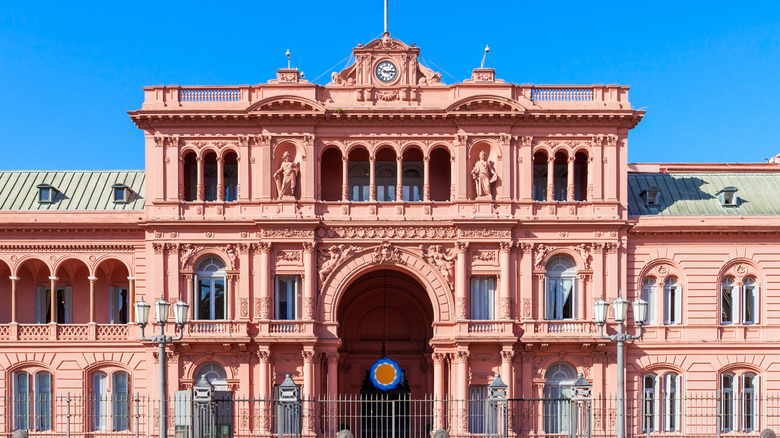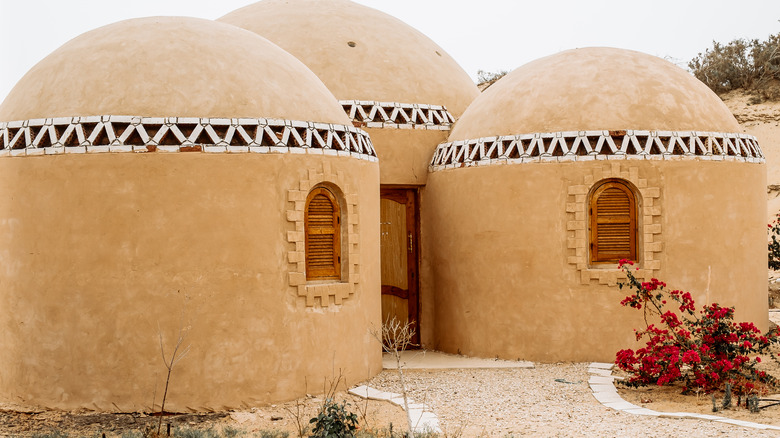The Gruesome Ingredient A British Architect Is Recycling In Bricks
Blood isn't just for the circulatory system of humans and animals, Kim Kardashian's vampire facials, or for sacrificial rituals. According to Equipment World, British architect Jack Munro is a pioneer in utilizing bloody animal waste for a gruesome yet sustainable purpose. Modern Farmer explains that in the slaughter industry, there are employees dedicated to discovering methods of utilizing as much of a butchered animal as possible.
While blood meal is most commonly used to feed other animals, it's also used in popular recipes like black pudding and blood sausage to give the meats an extra kick of flavoring. Food and Nutrition reports that while animal blood may not necessarily have much nutritional value, it is relatively harmless for human consumption. Plant Care Today states that blood meal can also act as an excellent plant fertilizer. But how and why did a University of Westminster student decide to test cow's blood for architectural purposes?
Bloody brilliant use for cow waste
First things first: a single slaughtered cow can produce up to 8 gallons of blood at slaughter which is then thrown away (via Phys.org). That's a lot of blood to go to waste. Because the blood coagulates, or thickens as it dries up, it can be difficult to do much with it. However, while studying at his university, Jack Munro devised a mixture of anticoagulant agents and antibacterials to create a brick material that is not only crimson, but more importantly, waterproof.
Munro decided to test his morbid mortar in Siwa, Egypt in 2012, an area that is impacted negatively by the many changes of the Saharan desert. He planned to spread the mixture over sand dunes and allow the material to harden before hollowing out the sand in order to create an edifice. Equipment World describes Munro's thesis and goals. Fresh blood mixed with preservatives and sand and baked for an hour at 158 degrees Fahrenheit would make a material that would essentially "generat[e] solar power on a large scale, creating a new economic base for [Berber] desert communities [in North Africa] through sale to the imminent single European energy market," Munro explained.
Seeing pink
Munro may not have been the first to have this idea. Those who have been to Buenos Aires may have spotted the Casa Rosada, a pink building that is the seat of the Argentine national government and home of the president's office. According to the Tourism Board of Buenos Aires, the Casa Rosada's pastel balconies were where Juan and "Evita" Perón deliver their famous speeches to Argentines in the 1940s and '50s. The palace looks like it was designed to be the set of a Wes Anderson film.
Designed by several European architects over a 16th Century fort, Casa Rosada's pink hue is allegedly a symbol of political parties coming together, as one party used red, and the other white. But a popular legend says that the building was painted with cows' blood as a paint alternative because paint peels in humidity. It still remains a political hotspot. Each Thursday, mothers congregate out front to remember the children who endured "forced disappearance" by the Argentine military (via Landing Pad Buenos Aires).
Was the project in vein?
While Jack Munro's project garnered several prestigious design awards in the United Kingdom, including that of the University of Westminster's 2012 Best Graduate Design Project, his project might have taken off like a lead balloon in the North African communities where he tested it. This may be due to the prevalent religious beliefs of Egypt, where, according to the U.S. Department of State, 90% of the population is believed to be Muslim. As The Guardian reports, there are strict rules regarding the slaughter of animals and the draining of their blood in Islam. Being uncertain of how the blood was obtained may or may not have impacted its success as an architectural ingredient.
Nonetheless, Munro seems committed to innovation. According to his LinkedIn profile, Munro is still working in the UK. He is co-founder of mule studio, "a multi-disciplinary design studio working across a huge range of scales, from wristwatches to some of the world's largest timber structures." The firm's website makes no mention of "Sanguis et Pulvis" (his thesis title, not a black metal band name), but states they have developed a bloody brilliant and bespoke watch line made of ethically extracted stones from around the world.



